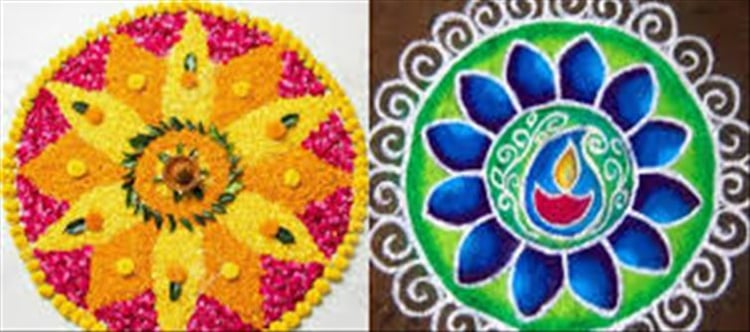
Rangoli always been a symbol of religious and cultural beliefs and is believed to ward off evil. But, the most important reason for decorating rangoli outside one’s home, is to welcome Goddess Lakshmi. rangoli can be of two types dry and wet. Dry rangoli is made with natural or chemical colors, flowers and petals. Wet rangoli is done with the help of paints.
The most common traditional rangoli designs are lotus, flowers, geometric shapes, swastiks and Oms. Rangolis have always been a part of the hindu culture since ages and have their mark in ancient history. Free hand rangoli which was once popular in rural gujarat, is now catching up in urban areas too. Sangeet Pradhan a housewife says, “I love to make rangolis with natural ingredients kumkum and turmeric. I prefer making free hand rangolis as they are more innovative, and I can try different designs every day.”
Rangolis are not just limited to the floor, a lot of people make rangolis on water pots and on walls as well. divya Kochar, a management student says, “I make rangolis on water pots by using flowers and petals. I also use floating candles to give that extra festive look. I love to experiment and do various kinds of designs during Diwali.” A lot of people prefer making stencil rangolis and because it’s an easier option for many. divya Poduval, a young professional says, “I prefer stencils because for someone like me who isn’t very good at drawing free hand, stencils are a big help!”




